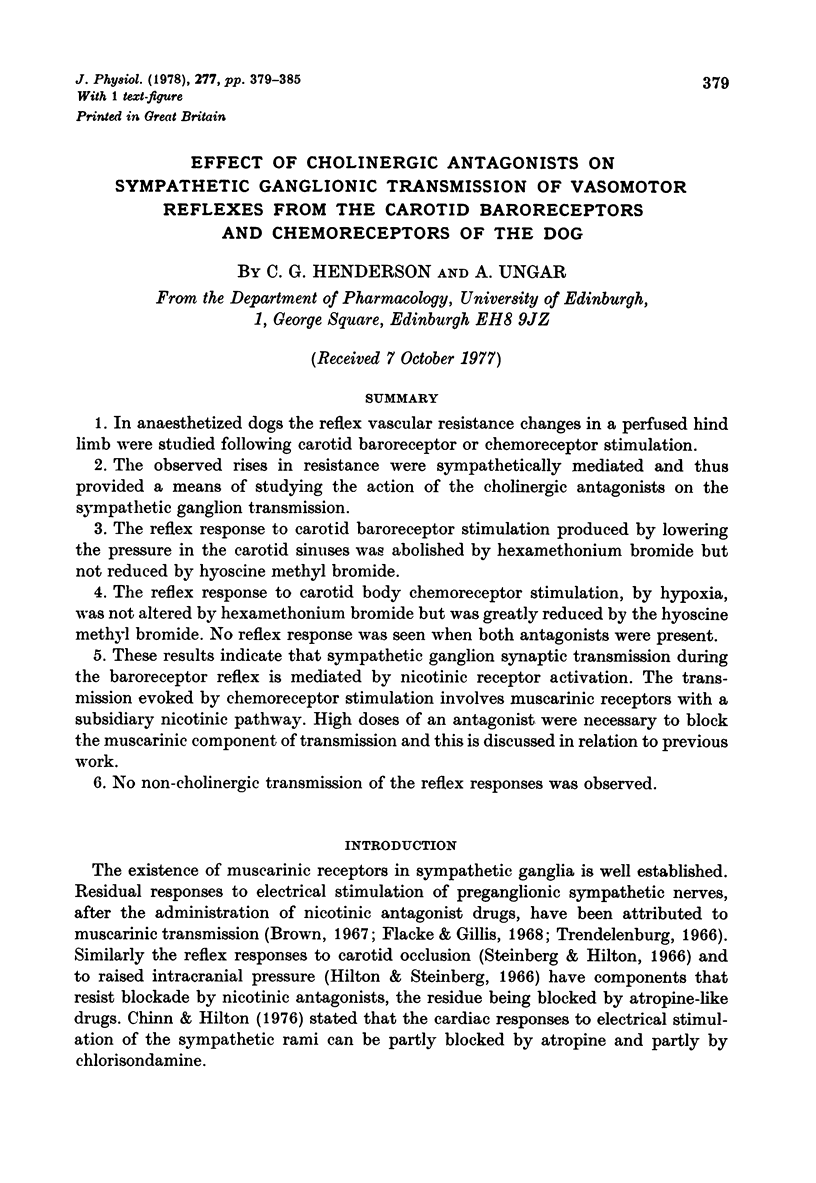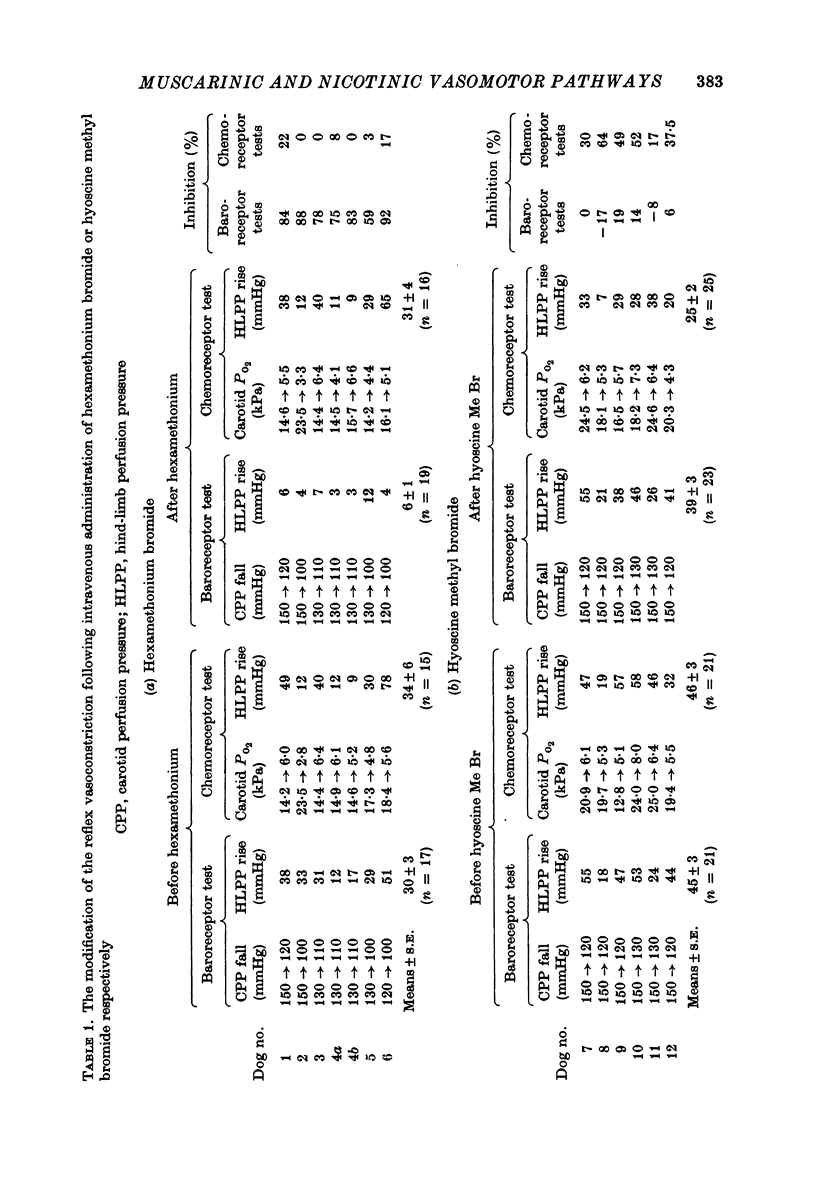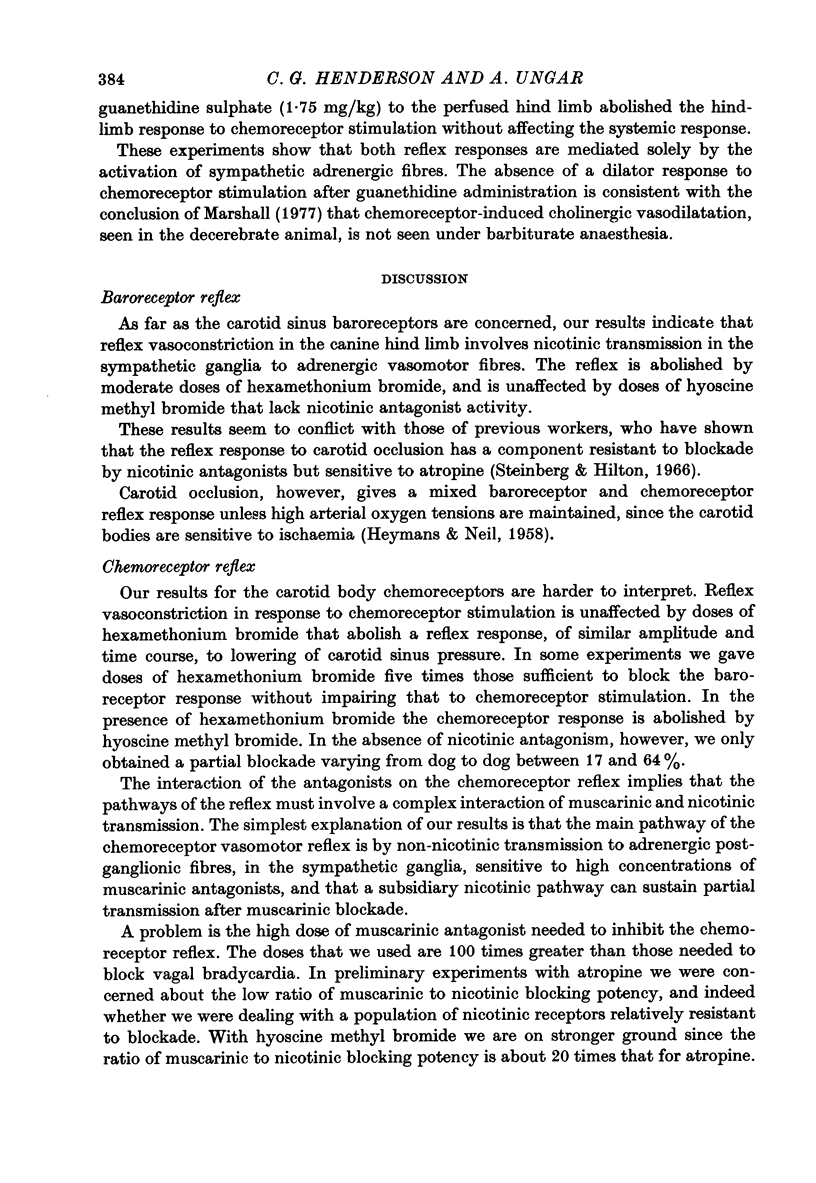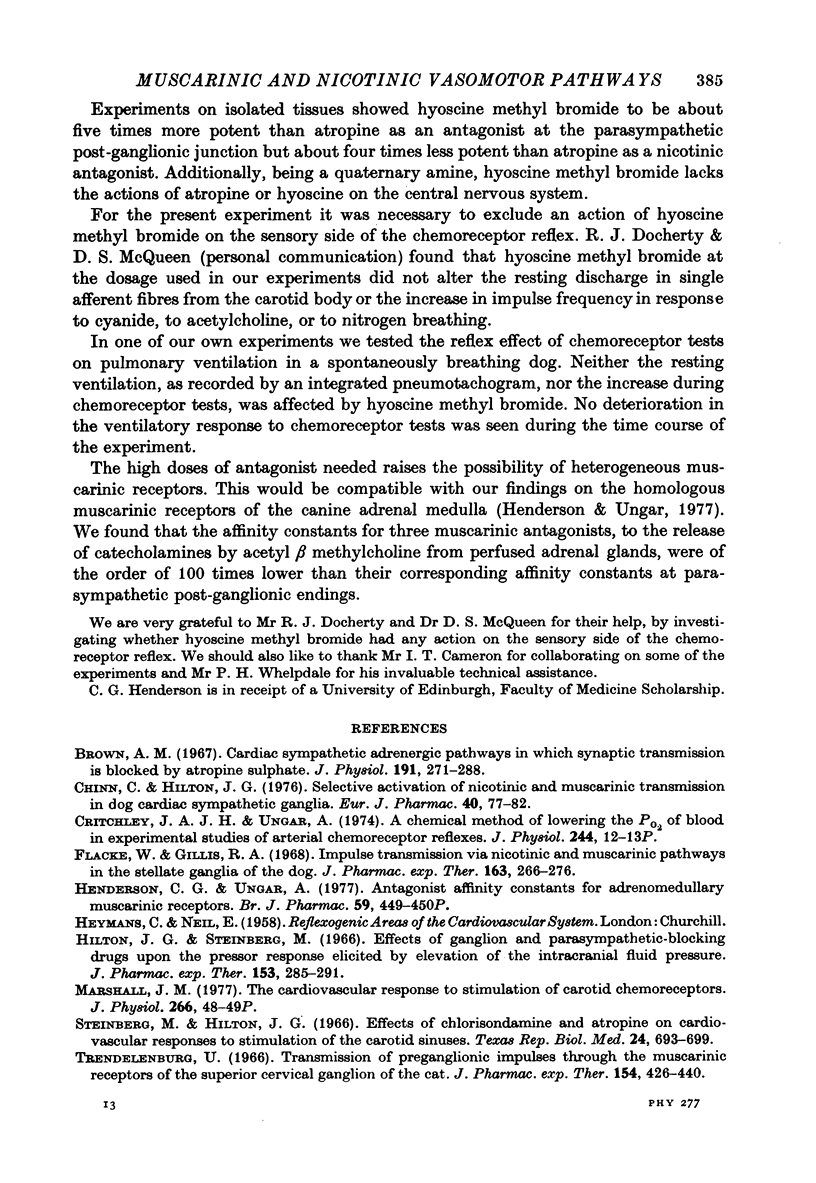Abstract
1. In anaesthetized dogs the reflex vascular resistance changes in a perfused hind limb were studied following carotid baroreceptor or chemoreceptor stimulation. 2. The observed rises in resistance were sympathetically mediated and thus provided a means of studying the action of the cholinergic antagonists on the sympathetic ganglion transmission. 3. The reflex response to carotid baroreceptor stimulation produced by lowering the pressure in the carotid sinuses was abolished by hexamethonium bromide but not reduced by hyoscine methyl bromide. 4. The reflex response to carotid body chemoreceptor stimulation, by hypoxia, was not altered by hexamethonium bromide but was greatly reduced by the hyoscine methyl bromide. No reflex response was seen when both antagonists were present. 5. These results indicate that sympathetic ganglion synaptic transmission during the baroreceptor reflex is mediated by nicotinic receptor activation. The transmission evoked by chemoreceptor stimulation involves muscarinic receptors with a subsidiary nicotinic pathway. High doses of an antagonist were necessary to block the muscarinic component of transmission and this is discussed in relation to previous work. 6. No non-cholinergic transmission of the reflex responses was observed.
Full text
PDF






Selected References
These references are in PubMed. This may not be the complete list of references from this article.
- Brown A. M. Cardiac sympathetic adrenergic pathways in which synaptic transmission is blocked by atropine sulfate. J Physiol. 1967 Jul;191(2):271–288. doi: 10.1113/jphysiol.1967.sp008250. [DOI] [PMC free article] [PubMed] [Google Scholar]
- Chinn C., Hilton J. G. Selective activation of nicotinic and muscarinic transmission in cardiac sympathetic ganglion of the dog. Eur J Pharmacol. 1976 Nov;40(1):77–82. doi: 10.1016/0014-2999(76)90356-3. [DOI] [PubMed] [Google Scholar]
- Critchley J. A., Ungar A. A chemical method of lowering the P0-2 of blood in experimental studies of arterial chemoreceptor reflexes. J Physiol. 1975 Jan;244(1):12P–13P. [PubMed] [Google Scholar]
- Flacke W., Gillis R. A. Impulse transmission via nicotinic and muscarinic pathways in the stellate ganglion of the dog. J Pharmacol Exp Ther. 1968 Oct;163(2):266–276. [PubMed] [Google Scholar]
- Marshall J. M. The cardiovascular response to stimulation of carotid chemoreceptors [proceedings]. J Physiol. 1977 Mar;266(1):48P–49P. [PubMed] [Google Scholar]
- Trendelenburg U. Transmission of preganglionic impulses through the muscarinic receptors of the superior cervical ganglion of the cat. J Pharmacol Exp Ther. 1966 Dec;154(3):426–440. [PubMed] [Google Scholar]


